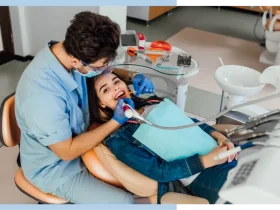Endoscopy is a minimally invasive medical procedure that has revolutionized the way healthcare professionals diagnose and treat various conditions within the body. It involves the use of a flexible tube with a camera and light source, known as an endoscope, to visualize and examine the interior of organs or body cavities.
Endoscopy is a versatile technique used across different medical specialties and offers numerous benefits compared to traditional surgical approaches. In this article, we will delve into the details of endoscopy, its uses, procedure, and the advantages it brings to patients and healthcare providers.
The Endoscopy Procedure Explained
Endoscopy is typically performed by a trained medical professional, such as a gastroenterologist, pulmonologist, or gynecologist, in a specialized medical setting. The procedure is often carried out on an outpatient basis, and in some cases, mild sedation may be administered to ensure patient comfort.
The Endoscope
An endoscope is a flexible tube equipped with a high-definition camera and a light source at its tip. The size and design of the endoscope may vary depending on the area of the body to be examined. For example, a gastroscope is used for upper gastrointestinal tract examinations, while a colonoscope is designed for visualization of the colon.
Insertion and Visualization
The endoscope is carefully inserted into the body through a natural orifice, such as the mouth, anus, or through a small incision in the skin. As the endoscope advances, the camera captures real-time images of the internal structures and displays them on a monitor, allowing the medical professional to observe and assess the condition of the targeted area.
Common Uses of Endoscopy
Endoscopy finds widespread application across multiple medical fields due to its ability to provide direct visualization and facilitate targeted interventions. Some of the common uses of endoscopy include:
- Gastrointestinal Endoscopy. This includes upper endoscopy (esophagogastroduodenoscopy) to examine the esophagus, stomach, and the first part of the small intestine, as well as colonoscopy to visualize the colon and rectum. These procedures are crucial for diagnosing conditions like gastroesophageal reflux disease (GERD), ulcers, polyps, and colorectal cancer.
- Bronchoscopy. A bronchoscope is used to examine the airways and lungs, aiding in the diagnosis of lung conditions such as chronic cough, infections, or lung cancer.
- Endoscopic Retrograde Cholangiopancreatography (ERCP). ERCP combines endoscopy with X-ray imaging to visualize and treat conditions affecting the bile ducts and pancreatic ducts, such as gallstones or strictures.
- Cystoscopy. This endoscopic procedure allows visualization of the bladder and urethra, assisting in the diagnosis and management of urinary tract issues.
- Laparoscopy. Also known as keyhole surgery, laparoscopy uses a special endoscope called a laparoscope to visualize the abdominal organs and perform minimally invasive surgeries, such as appendectomies or gallbladder removals.
- Hysteroscopy. Used in gynecology, hysteroscopy enables visualization of the uterus to diagnose and treat conditions like abnormal bleeding or polyps.
Advantages of Endoscopy
Endoscopy offers several advantages compared to traditional surgical procedures, making it a preferred choice for both patients and healthcare providers.
- Minimally Invasive. Endoscopy is minimally invasive, requiring only small incisions or natural body openings. This leads to reduced pain, shorter recovery times, and lower risk of complications compared to open surgeries.
- Direct Visualization. The real-time visualization provided by endoscopy allows for accurate and precise diagnosis, leading to targeted treatments and improved patient outcomes.
- Reduced Hospital Stay. Many endoscopic procedures are performed on an outpatient basis, meaning patients can often return home the same day, minimizing hospital stays and associated costs.
- Lower Infection Risk. With smaller incisions and fewer instruments, the risk of postoperative infections is significantly reduced.
- Cost-Effective. Endoscopy can be more cost-effective compared to traditional surgeries, as it reduces the need for hospitalization and other resources.
- Early Detection and Prevention. Endoscopy plays a crucial role in the early detection of conditions like cancer, enabling timely intervention and potentially preventing disease progression.
Conclusion
Endoscopy is a versatile and invaluable medical procedure that allows healthcare professionals to directly visualize internal structures and diagnose a wide range of conditions. Its minimally invasive nature, coupled with the ability to provide real-time imaging, makes endoscopy a preferred choice for patients and healthcare providers alike.
From gastrointestinal examinations to gynecological procedures and laparoscopic surgeries, endoscopy continues to revolutionize medical practice, leading to improved patient outcomes and a higher quality of care. As technology and techniques continue to advance, endoscopy is likely to play an even more significant role in the future of modern medicine.












